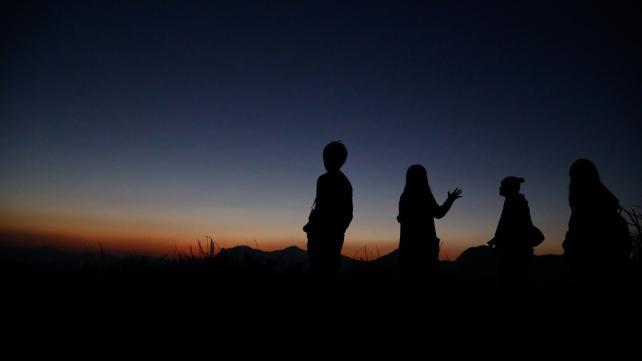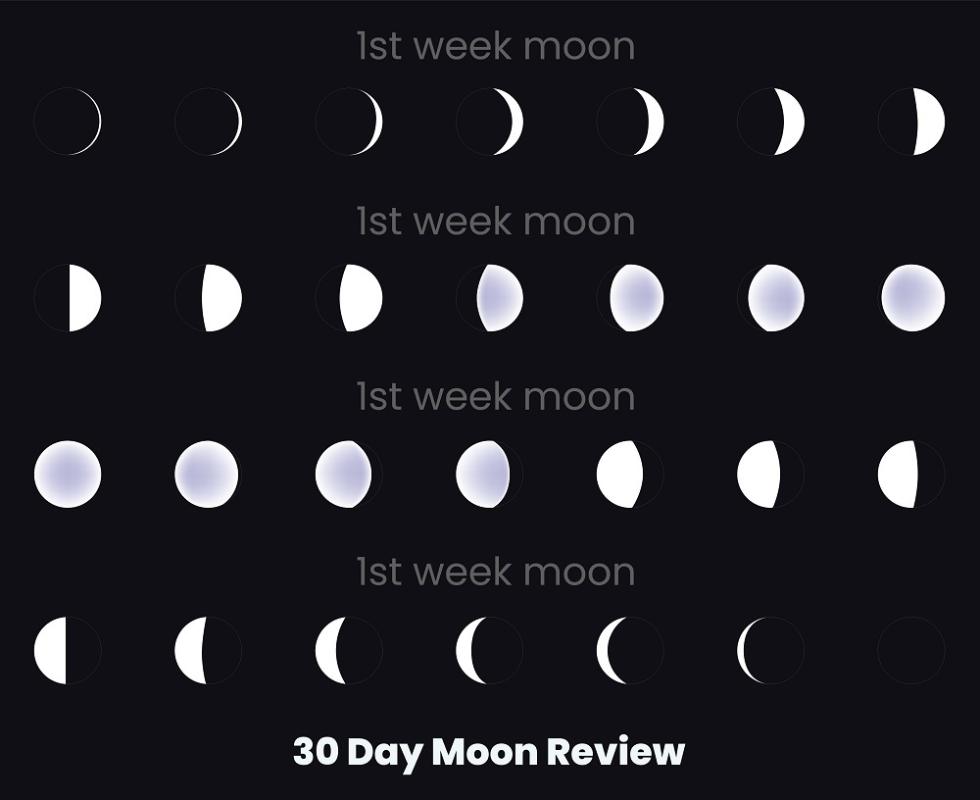
Abu Hurayrah, may Allah be pleased with him, narrated that Allah’s Messenger, peace and blessings be upon him, said:
“Whenever you sight the new moon (of the month of Ramadan) observe fast, and when you sight it (the new moon of Shawwal) break it, and if the sky is cloudy for you, then observe the fast for thirty days.”
(Sahih Muslim #2378)
This hadith describes an important Islamic tradition. Historically, Muslims have been a people who observed the moon's movements to calculate time and to identify the start and end of each lunar month. The commencement of the month of Ramadan and our two Eid holidays are marked by the sighting of the hilaal (crescent moon). In more recent times, however, many Muslims have opted to measure time using mathematical and scientific calculations.
Each year, some Muslims who live in countries without a Muslim government (or a widely-accepted, Muslim authoritative body) deliberate over the start of Ramadan. For Muslims in the West, determining the start and stop of the Islamic months is not straightforward. We may, unfortunately, engage in what has colloquially become known among some Muslims as the "moon-sighting wars." Basically, groups of Muslims debate about the start and end dates of Ramadan, with each group basing their position on their scholars' interpretations of the evidence. As a result, some of us will start our fasts whenever we hear that a righteous Muslim anywhere in the world has sighted the new moon. Some of us will only begin fasting if the moon has been sighted in our particular locale. Still, others will use calculations to forecast the appearance of the new moon, perhaps referring to the verse in Surah Ar-Rahman that says:
“The sun and the moon follow courses (exactly) computed.“
(Surah Ar-Rahman, 55:5)
Regardless of which method we choose to follow, it is important that we teach our families these Islamic traditions and make their observance family or community endeavors. It is equally important that we do not become distracted away from the objective of these traditions, which is to increase our righteousness.
Get Everyone Involved
One way we can involve the entire family in sighting the moon is to regularly watch the sky together. Too often, we get so caught up in the momentum of our daily lives that we fail to take time to observe nature and reflect. In the Quran, Allah encourages mankind to observe and reflect on nature, reminding us with His statement:
“And He has made subservient for you the night and the day and the sun and the moon, and the stars are made subservient by His commandment; most surely there are signs in this for a people who ponder.”
(Surah An-Nahl, 16:12)
These truths are echoed in Surah Luqman when Allah asks:
“Do you not see that Allah has made what is in the heaven and Earth subservient to you and made complete to you His favors outwardly and inwardly?”
(Surah Luqman, 31:20)
We have to instill in our loved ones the idea that we cannot ponder or reflect on that which we never take the time to see.
Try to revive within your family and community the Sunnah of gazing at the sky. Here are some detailed suggestions:
- Pick a date. Go outside. Find a nice clearing or hill and skywatch. Bring snacks or a picnic basket.
- Cultivate an awareness of astronomy. Find and display maps of the sky and posters of the moon’s phases.
- Learn and use the correct terminology to describe the planets, the stars, the shape and movement of the moon, and other celestial phenomena.
- Keep a record by sketching the night sky. Be sure to include the date, time, and approximate direction you are each facing.
- Compare what you each observe and what you observe over time. Have family and friends talk about what they observe and then
After a while, you may find that even the youngest members of your group are noticing things that the adults may miss.

Search for the New Moon
Once we have piqued everyone's interest in sky-watching, we can then go on to look for the new moon of Ramadan, inshaAllah, God willing. Here are some basic steps to help:
- A few weeks before the anticipated beginning of Ramadan, observe the sky toward the end of the 'Asr prayer time to see where the sun sets.
- Wait about fifteen minutes, and then look in that same part of the sky to see if you can spot the hilaal or crescent moon.
- Remember that the actual new moon cannot be seen. It is totally black. What you are looking for is the little sliver of the crescent.
- If the crescent can be seen that night, it will probably only be visible for about 30 minutes.
- If the moon is sighted, say a prayer. Talhah ibn Ubaydullah, may Allah be pleased with him, said that when the Prophet, peace and blessings be upon him, would pray:
“O, Allah, do cause the appearance of this moon to be a harbinger of peace, faith, security, and Islam for us. Your Lord, O moon, and mine, is Allah. May this be a moon that presages guidance and good.”
(Mishkat al Masabih, Hadith #1233)
6. Do the same thing at the end of Ramadhaan.
Why Bother? There’s an App for That!
Given that there are more expedient ways to track the appearance of the new moon, why should we take time from our busy schedules to look for it?
The most obvious answer is that by doing so, we would be reviving a Sunnah. Our Prophet advised us to do so when he said:
“Know that whoever revives a tradition from my Sunnah, if it has died out after me, he will have a reward like those who act upon it without diminishing any of their rewards.”
(Sunan al-Tirmidhi #2677)
Also, if we are trying to sight the moon with the specific intention of reviving a Sunnah, it could be our path to Jannah. Anas bin Malik said:
"The Messenger of Allah said to me, 'Whoever revives my Sunnah, then he has loved me. And whoever loved me, he shall be with me in Paradise.’”
(Sunan al-Tirmidhi #2678)
Beyond that, when we observe the traditions of the Sunnah together with our families and friends, it brings us closer together.
Many years ago, I taught a story to my fifth graders about a grandmother and grandson, and her insistence one night that they observe the Leonids meteor shower together. The Leonids occur when the Earth passes through the debris left behind by a comet named Tempel-Tuttle. The boy did not see the value in spending a damp, chilly evening gazing at the night sky. Still, the grandmother made him stick it out. She knew what he didn’t know then - the Leonids only appear every 33 years because it takes that long to complete their orbit around the sun. The elderly woman knew she probably would not be around to see it appear again. Later in the story, when his grandmother had passed away, the boy, who was now a man, looked at the night sky in search of the Leonids. He understood that his grandmother was really teaching him, like Allah teaches us in Surah ‘Asr, about:
“... the passage of time through the ages…”
(Surah Al-Asr, 103:1)
Such a lesson is invaluable.
This year, and moving forward, inshaAllah, let’s spend less time debating about the intricacies of determining the beginning and end of our sacred month and focus more time on the lessons we can learn from it.
Candice “Sister Islaah” Abd’al-Rahim reverted to Islam in 1976, and considers herself a student of knowledge. She has deep education credentials which include an M.A. in Teaching, a Certificate of Advanced Studies (Post-Masters) in Administration and Supervision, a B.S. in English, and experiences as a principal (in fact the first hijab public school principal in Maryland!), curriculum and staff developer, mentor, and classroom teacher of grades pre-K through 12. She is a former adjunct professor at Johns Hopkins University’s Graduate School of Education and is a doctoral candidate in Islamic Sciences at the International Online University. Islaah’s contributions to the field have earned her honors in the Who’s Who of Distinguished JHU Alumni. She is a wife, daughter, mother, and grandmother and is an active member of several Muslim communities in the Baltimore area



Add new comment